3. Disney California Adventure
In the '90s, Disney officially announced a second theme park coming to join the original Disneyland in California – the Possibilityland: WESTCOT. But when plans for a Westcot grew too ambitious in the wake of Disneyland Paris' dismal opening, the massive expansion plans contracted and Disney's California Adventure Park was selected instead as a way to convince tourists they could see all that California had to offer – beaches, mountains, wineries, and movie studios – without leaving Disney property. We took a walkthrough of the pathetic park in its own standalone feature, Declassified Disaster: California Adventure – a must-read for Disney Parks history fans.
2001 - 2010. Image: Disney
But born of distinctly '90s style with severely limited budgets, minimal input from Imagineering, and a heavy emphasis on being "modern" and "edgy" with "MTV attitude," the second park didn't exactly land with Disneyland's heavily local audience, meaning national marketing plans were scrapped and Disney's California Adventure became a massive money pit for the resort. Rather than letting the park bleed for decades, CEO Bob Iger announced an ambitious five-year plan to take place between 2007 and 2012, stripping each of the park's themed lands, removing the obnoxious attitude, and rebuilding the park in the style of Disneyland – historic themed lands carrying guests to idealized versions of Californian stories.
On May 27, 2010 – mid-way through the reconstruction – Disney made an unexpected announcement... Disney's California Adventure was gaining a new name! ... Kind of. The park would lose the possessive apostrophe-s in "Disney's" (a move in line with the company's modern branding style guide, i.e. "Disney Aladdin"). However, that was just the impetus to relaunch the park's branding ahead of the completion of its five-year plan. What's more, Disney California Adventure would also be accompanied by a new logo:
2010 - present. Image: Disney
While admittedly somewhat nondescript, the new logo somehow does manage to echo a sort of classic, timeless design (fitting the park's Buena Vista Street and other lands themed to idealized Californian history) while also establishing a more playful, cartoon-ish vibe fit for additions like World of Color, Cars Land, and the Little Mermaid – Ariel's Undersea Adventure that came with the 5-year rebuild. The new logo also omits Grizzly Peak, which had long-since been demoted as a park icon.
Even back at the time of the park's 2012 re-opening, some fans argued that it ought to get a much more severe name change... you can see why. While the park's billion-dollar refit built beautiful lands themed to Californian places, the rides in those lands were almost entirely themed to Monsters Inc., Toy Story, The Little Mermaid, and A Bug's Life.
Arguably, that's gotten even worse in the years since the remaining E-Tickets anchoring the Californian story – California Screamin' and the Lost Legends: The Twilight Zone Tower of Terror and Soarin' Over California – have likewise been replaced by Pixar, Marvel, and a tour of worldwide landmarks rather than Californian ones. Will the invasion of intellectual properties eventually earn Disney California Adventure another new name and logo? Possibly... Until then, we'll just have to get used to seeing Spider-Man, Mike and Sully, Woody and Buzz, and Elsa and Anna enjoying a getaway in the Golden State.
4. Disney Springs
1975 - 1977. Image: Disney
Though Walt's E.P.C.O.T. was never built, a real community did become part of Walt Disney World. The tiny recreational village of Lake Buena Vista was designed as a residential community that would be connected to the larger Walt Disney World property with Peoplemovers and Monorails. While the transportation never arrived, the Lake Buena Vista Shopping Village opened in 1975 on the shores of the same lake as a place for visitors to "The Vacation Kingdom of the World" to grab sundries, souvenirs, and snacks.
Located fairly far out on the underdeveloped east site of the resort, the Lake Buena Vista Shopping Village was a little too remote to earn much foot traffic. So in 1977, it was expanded and rebranded as the Walt Disney World Village:
1977 - 1989. Image: Disney
In 1989, cinematic new CEO Michael Eisner decided to develop the property as a rival to Orlando's famous Church Street Station – at the time, a collection of nightclubs. The Walt Disney World Village was renamed the Disney Village Marketplace, being joined by a new neighbor:
1989 - 2008. Image: Disney
Pleasure Island was literally an island connected to the Village Marketplace by bridges. The island contained bars, nightclubs, and restaurants meant to appeal to twenty-somethings in the Orlando area, drawing adults without kids into Walt Disney World. What's more, the new addition united all of those bars, nightclubs, and restaurants into a giant, overarching continuity, connecting them in the cross-continental tale of S.E.A.: The Society of Explorers and Adventurers. To this day, one of those nightclubs – the Lost Legend: The Adventurers Club – remains one of the most beloved lost attractions ever to stand at Walt Disney World.
In 1997, the Village Marketplace and Pleasure Island were joined by a third area – the West Side – populated by oversized, neon '90s attractions like Cirque du Soleil, a Virgin Megastore, and the so-bad-it's-good Declassified Disaster: DisneyQuest. The three regions together were rebranded as a single complex, memorably renamed with a new logo:
1997 - 2015. Image: Disney
Downtown Disney went through a number of starts and stops in its growth, but was always comprised of those three areas: the Marketplace, Pleasure Island, and West Side... Until Pleasure Island closed in 2008. Disney officially announced plans to replace the clubs with a high-energy, kinetic, electric new zone called Hyperion Wharf, doubtlessly filled with restaurants and retailers rather than expensive-to-operate themed clubs and interactive experiences.
But Hyperion Wharf never came. Insiders say Disney was having trouble luring high-end retailers to the tired, '90s Downtown Disney, and decided that a larger-scale rebrand was needed. In 2013, it was announced that the Downtown Disney logo and brand would be retired. The Marketplace and West Side would recieve aesthetic improvements; Pleasure Island would become an upscale village called "The Landing," and a new "Town Center" would be built.
2016 - present. Image: Disney
Imagineers carefully crafted the new Disney Springs, centering the shopping district and its style around the story of a long-gestating Floridian village built around a natural waterway. (Art imitates life.) Disney Springs largely lost the kitschy 90's gaudiness of Downtown Disney, and that's on purpose. While fans of Downtown Disney's roadside attraction postcard styling decry Disney Springs as nothing more than an expensive, elite, upscale outdoor shopping mall that you could find in any resort town, they fail to realize that that's exactly what Disney was going for.
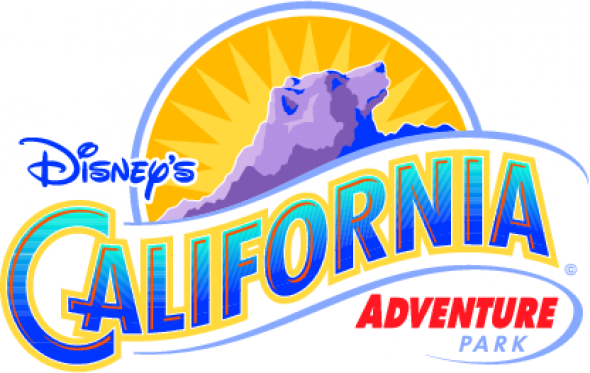
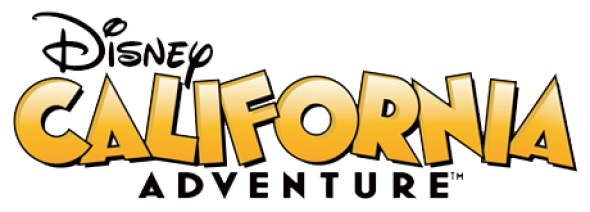
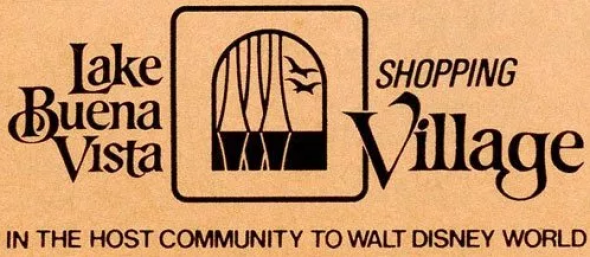
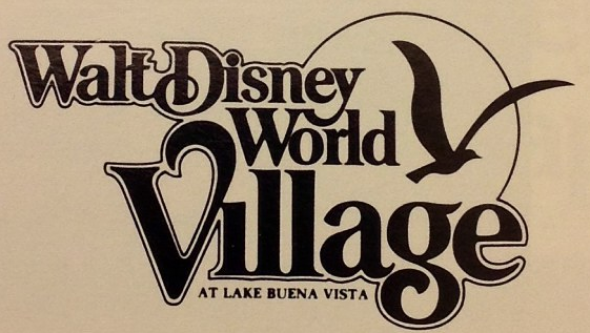
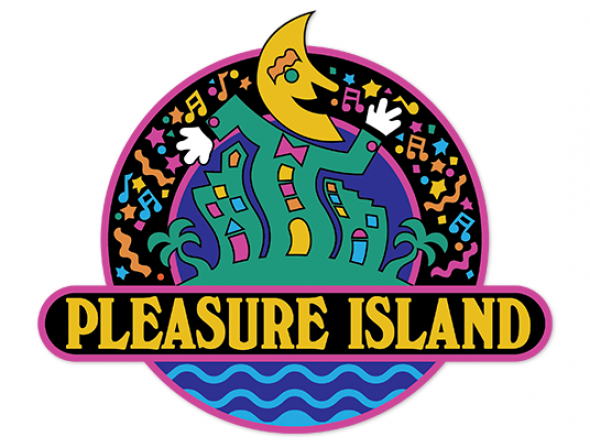
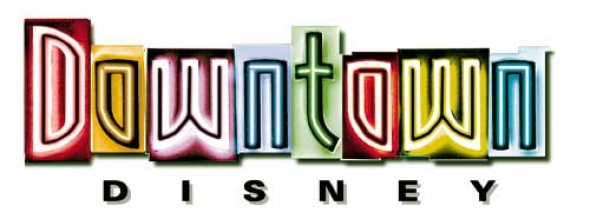
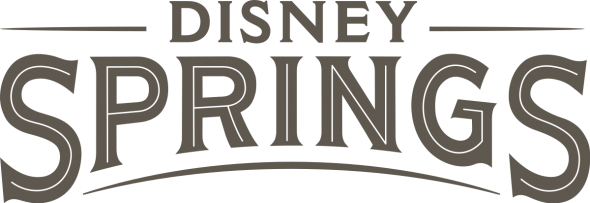

Comments
In 1994 Epcot was referring to itself as Epcot 94. I worked there during my Walt Disney World college program and I had to start my Spiel with "Good morning/afternoon/evening ladies and gentlemen and welcome to Epcot 94"
Ahh, I was off by a year! Thanks for letting me know, Kim. I bet it was a great time to be in the College Program!